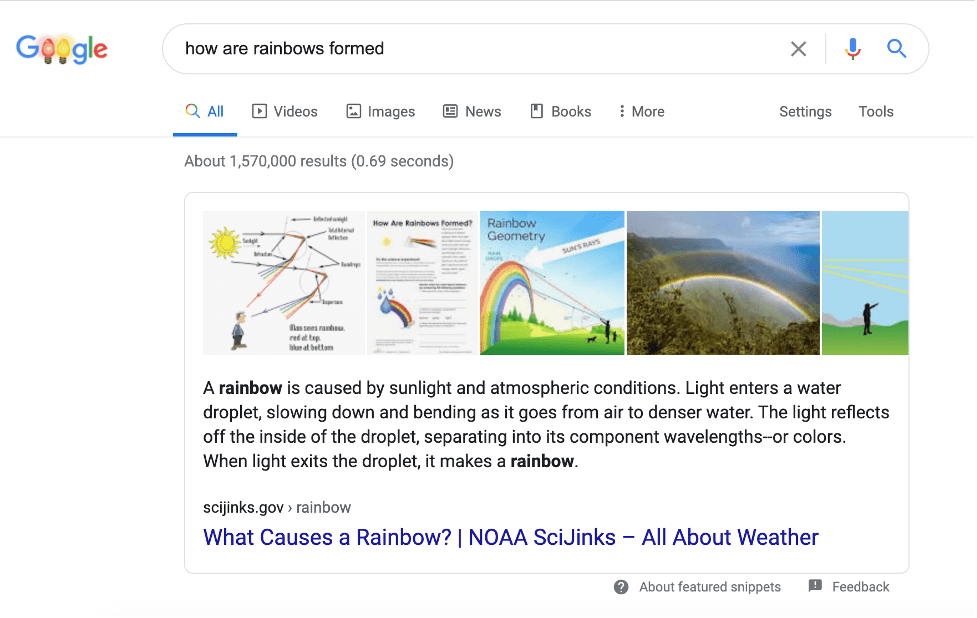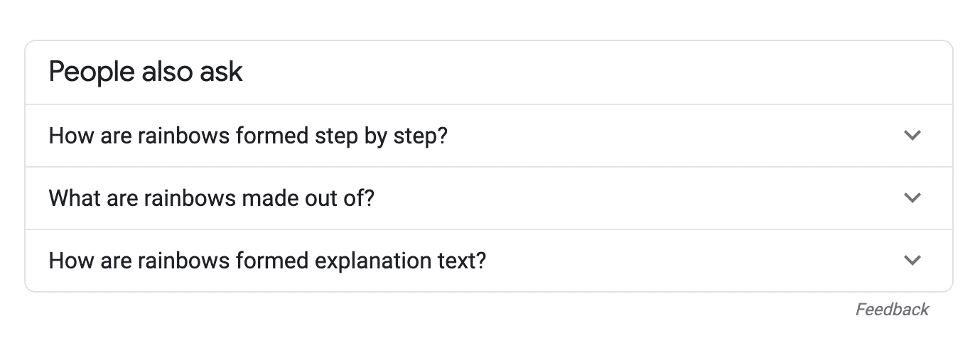

Content marketing adds value to your online posts, driving revenue and increasing your influence without breaking the bank. If you’re looking to start the new year by boosting your online presence, growing your business, and breaking free of relying on paid ads to get noticed, it offers a time-tested solution. This year, try these content marketing tips to boost your marketing strategy and start seeing results.
1. Go Live
Live streaming is a great way to connect with learners and humanize your personal brand. Unlike the videos you might produce for your online courses or official channel, live streaming doesn’t have to be complicated. Simply grab your phone and start broadcasting.
Many professionals can be turned off by the idea of appearing casual in a business setting, but letting learners connect with you on a personal basis can make you more approachable and relatable, especially if you’ve cultivated a formal image in your pre-recorded videos. Live streaming is a way to allow learners to connect with you on a deeper, more immediate level.
Live streaming: The stats
- Cisco projected video to make up 80 percent of all mobile traffic by the end of 2021
- Consumers spend more than 5 hours watching online videos each day
- The live video market is projected to be worth $7.5 billion by 2022
- Over 2 billion people have watched Facebook Live videos
- Facebook and Instagram Live videos are watched three times longer than pre-recorded content and get 10 times as many comments
The immediacy of live streams produces immediate results — learners tune in to avoid missing out and knowing that you are seeing their comments incentivizes learners to get engaged.
Consider conducting a short seminar via live stream, teaching an introductory lesson, or simply providing a platform for feedback and general discussion. It’s a great way to make a one-on-one connection with many learners at once, and after the live stream is over you can repurpose the video to help grow your content library. (Remember, everything is a production event!)
2. Encourage user-generated content
Not all the content in your content marketing strategy has to come from you. User-generated content is a powerful marketing tool for several reasons. Firstly, it creates social proof — new learners finding the content know they’re not the only ones interested in your teaching, and they can also review the outcomes from your classes from learners who preceded them.
Secondly, it’s much more shareable. The user who generated their content is more likely to promote your post featuring them, and show it to their online friends, who are also more likely to like, comment, and repost, producing far better organic results than something you might have created yourself.
User-generated content (UGC): The stats
- UGC has a conversion rate 161 percent higher than other content forms
- Review-based ads get 4 times more clicks than the competition
- Two-thirds of consumers are more likely to make a purchase if they see reviews
- A quarter of search engine results for the top 20 brands are UGC
User-generated content is perceived as being more honest, relatable, and trustworthy than almost any other kind of content or advertising. What it lacks in professional polish, it makes up for in authenticity.
Depending on your teaching field, you can employ UGC in a number of ways to boost your brand, from reviews and testimonials, to videos and photos of course outcomes.
Music, cookery, and crafting edupreneurs can encourage learners to share the results of their classes on social media and use a hashtag to make finding and reposting their content easy.
Language educators might ask their learners to post conversational videos where they’re using their new skills, and edupreneurs across the board should provide certificates, social banners, and even Instagram stickers that learners can incorporate into their own online posts.
3. Focus on Results
Why do you create content? What is its purpose? It’s time to get specific. Each piece of content you create should have a specific purpose and be tailored to deliver results.
Your desired goal can be anything from new members enrolled in your online course to additional social media followers. Once you have a result in mind, consider how to tailor your content to meet that goal. If you want people to share your latest blog post, have you promoted them to do so? If you want email subscribers to buy your book, make sure there’s a prominent link to the store where it’s available. Simple, direct messaging is the most effective at delivering results.
Begin a results-driven strategy by digging into your learner persona. What motivates them to act? What incentives will deliver the best results? You’ll probably have to go through some trial and error to find the specific triggers that work best for your learners, but the end result will be a content marketing strategy that truly delivers.
4. Rely on data-driven content
How often do you review the content you create to determine its effectiveness? Many content creators overlook their own data because they don’t know how to quantify it, or how to establish a baseline of what is good or bad. If your content strategy is results-focused, it becomes easier to understand the outcomes.
The first step is to know your learners and tailor your content to appeal to them. That includes not only the subject matter, but the format, the platform you use to share the content, and the relevance of your end goal. If the people engaged in your field have a strong community on Twitter, you’re fighting an uphill battle trying to gain traction on Facebook.
If you’re targeting undergraduates with your writing, but your course costs four-figures to join, your conversion rate will be very low. Getting the basics right is your first step toward success, and delving deep into who your learners are and how best to reach them will make your entire content marketing strategy more successful.
The next consideration is outcome — which of your posts performed well, and which failed to make an impression? Always keep your original goal in mind when determining if a piece of content was a success. A post designed to sell your latest book might seem successful if it goes viral, but it’s still a failure if your book sales didn’t increase. Don’t be distracted by positive metrics in an unexpected area if they don’t deliver your ultimate goal. Thousands of website hits mean nothing if none of those views convert into learners.
Keep your goal as your baseline, and aim for consistent improvement. You won’t sell a hundred courses off the back of a single post, but with a consistent content strategy you can turn a trickle of interest into a cascade. Don’t be afraid to try new approaches, but also be prepared to abandon a method that isn’t working.
Aim for Google Snippets
Not all your content has to be 4000-word blog posts. In order to get noticed, one of the best content strategies is to answer a question in the simplest way possible. That can give you a coveted spot on Google Featured Snippets, the short preview that appears at the top of the search engine results page for common questions.


Google’s Featured Snippets segment is a great way to leapfrog the competition and get to the very top of Search Engine Results Pages (SERPs), especially if you’re trying to out-compete more established competition.
While there are drawbacks as well as advantages to getting a Featured Snippet, being featured raises your domain authority and makes it more likely your other posts on the same site will also rank highly in SERPs. In order to maximize your chances of Google picking up your content, research common questions from the People Also Ask and Related Searches sections on Google.




When you write content aimed at inclusion in Featured Snippets, make sure to keep your answer brief, clear, and simple to read.
6. Tailor your content for voice search
Smart devices are everywhere, and voice search is becoming an increasingly common way people are accessing and consuming online content. Statistics show 41 percent of adults use voice search on a daily basis to do everything from checking the weather to making purchases. Keeping voice search in mind when creating content ensures your site and products are easily accessible to the widest number of people.
Search engine queries have been getting shorter and shorter as people omit unnecessary words and focus only on the most important clauses. “Chinese restaurant near me,” or “best TV brand,” are common examples. When using voice search, the queries tend to be longer because people use more natural language. “What’s the best rated Chinese restaurant in New York” is a more likely example of a voice search. For content creators, this opens up more opportunity to capitalize on long-tail keywords — those that contain several clauses, such as “top rated,” “near me,” “for women,” and so forth.
Long-tail keywords are great for edupreneurs because they allow you to target a very specific niche and allow content creators to repurpose similar content aimed at different demographics. To use the above example, a page about how rainbows are formed will read very differently if aimed at elementary students, high schoolers, or adults. Using local SEO such as physical location, and variables such as age, gender, and educational demographics, can help edupreneurs to expand their content marketing to reach new audiences.
Featured Snippets are often utilized in voice search results for common queries, giving you another reason to target your content toward being Snippet-ready. Another way to provide instant access answers to common questions is to include an FAQ section in your website, where you can provide succinct details about your products and background.
7. Don’t overlook podcasting
Podcasting continues to gain momentum, and shows no sign of slowing down in 2024. Over a third (37 percent) of American adults listened to a podcast in the last month, and podcast listeners tend to be younger, wealthier, and better educated than the average population — making them the perfect demographic for many edupreneurs.
Related: Should you start a podcast?
While podcasting has been growing in leaps and bounds over recent years, as an industry it is still in its infancy. That means less competition for listeners, and greater opportunity to carve out a niche that will position you as an authority in your field.
Hosting your own podcast isn’t for everybody, but for edupreneurs who have the skills and are in a position to begin building an audience in a brand new medium, it’s still early enough to create a significant impact.
8. Build authority
However you decide to deliver your content, your goal with every piece should be to increase your authority as an educator in your field. Choose a strategy that enables you to demonstrate your knowledge, and your teaching methods.
It isn’t only potential learners you need to impress. Google’s algorithm privileges Expertise, Authority, and Trustworthiness (EAT) when ranking websites, meaning it’s important to establish yourself as a reputable figure before your site will top SERPs and learners will sign up for your courses.
Building authority doesn’t have to be complicated. Begin by ensuring your credentials are easily accessible on your website and social media profiles. Use your professional title, if you have one, or demonstrate social proof (“50,000 courses sold!”) to show learners — and search engines — that you are a reputable figure in your industry.
Through your own website and social posts, you can also demonstrate your authority in your field by creating content that is designed to showcase your skills. However content marketing doesn’t end with your platforms. Reach out to other industry influencers, relevant magazine and review websites, podcasts, video channels, and more. Offer guest posts, interview slots, and cross-promotions to broaden your reach and blanket key online platforms with your presence and credentials.
9. Make it personal
People like to feel like they know one another, and that’s never been more true than when we’re online. Social media connections tell us we’re all friends, and anyone can reach out directly to politicians, celebrities, and other public figures at the click of a button. Remaining aloof simply doesn’t cut it and can alienate you from potential learners. Instead, don’t be afraid to get personal and show your followers your human side.
How much you feel comfortable sharing is ultimately up to you, but even small insights, such as a picture of your favorite mug on your desk, give followers a glimpse behind the veil and make you a more relatable educator.
10. Quality over quantity
Finally, don’t be tempted to try to do it all. With a new year, and new resolutions, many edupreneurs develop expansive content marketing strategies that quickly become overwhelming in practice. Be realistic about what you can achieve. Writing a blog post per day, and starting a podcast, and finally getting around to creating a Facebook group, and teaching two courses and writing a book, simply isn’t going to happen. Instead, focus on what you can reasonably do, and do well.
Consistency is more important than frequency. If the most you can produce is one good blog post per month, then stick to that, and publish it on the same date every month. That way your followers will know when to expect the next post from you and will look forward to reading it.
Rather than spreading yourself thin trying to maintain an online presence on every social media platform, choose one or two where you perform best, and devote all your attention to capitalizing on those audiences.
Part of creating a great content strategy is having a reasonable and realistic expectation for what you can deliver. Ultimately, all your content marketing is designed to attract and convert new learners, so it should always take a backseat to creating new courses, teaching, hosting seminars, and doing the work that actually drives your business forward. By following these tips, you can establish a successful, realistic content strategy that will grow your business through 2022 and beyond.
See also:
Title Image by Free stock photos from www.rupixen.com from PixabayTable of Contents


